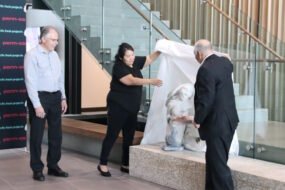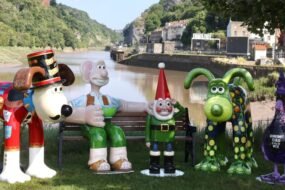
A headless sculpture of that Buddha found during a recent archaeological exploration at adri in Mangaluru.
| Photo Credit: SPECIAL ARRANGEMENT
A headless sculpture of the Buddha and a group of three rock cut caves of great importance were found during a recent archaeological exploration conducted at Kadri in Mangaluru, according to T. Murugeshi, retired associate professor in ancient history and archaeology, MSRS College, Shirva, Udupi district.
“The sculpture is stylistically datable to the 4th or 6th century A.D.” he said in a release.
One among a group of caves found during a recent archaeological exploration at Kadri in Mangaluru.
| Photo Credit:
SPECIAL ARRANGEMENT
The sculpture was found in a water tank near the Kadri Manjunatha temple in a discarded state. The sculpture was lifted from the tank for study with the permission of the temple administrator, he said in a release.
The sculpture was highly corroded. “The head has been chopped off and the right hand is destroyed, but, still it has its serene beauty in its physical appearance. The Buddha is seated in the padmasana pose on the padma peeta in dhyana mudra by placing both palms above the centre of legs. The upper cloth passing over the left shoulder lays flat on the chest is very indistinctly visible,” he said.
A pillar in the outer prakara of the temple has Dhyana Buddha sculptures seated on lotus.
“Thus, this sculpture under study is identified as Dhyana Buddha beyond doubt. The sculpture is about 68 cm in height and 48 cm in width including the prop of the image. The sculpture is stylistically datable to 4th – 6th century A.D. It is supposed to be the presiding deity of the temple,” he said.
Mr. Murugeshi said a group of three rock cut caves found above the eastern side of Kadri tanks are of curious interest. “They are cut in laterite above the ground. The first one from the right is about 8 feet in height and has a semi circular entrance like a porthole. It has a single square room with a small provision for a lamp. The entire structure looks like a megalithic dolmen. The middle and third ones have a high plinth and two square entrances with single square rooms. All caves have a sloppy canopy with holes to clear off rainy water. The nature of the caves clearly indicates that they were used for residential purpose,” the historian said in the release.
The present discovery under study has a great importance in South Asian Buddhist studies and Tuluva history as well. The sculpture found at Kadri has close similarities with that of the Buddha image found at Mushira Waddo in Colvale of Goa, now displayed in Fr. Heras Institute at St. Xavier’s College, Mumbai.
The Dhyana Buddha image belongs to Mahayana Buddhism and caves also belong to the Mahayanists.
“By this discovery the decades of controversy over Kadri, whether it was a Buddhist centre or not is very clear. Kadri is a Buddhist centre over the centuries right up to 10th century A.D. as revealed by the inscription of Alupa king Kundavarma found on the Lokeshwara image of Kadri temple. The Mahayana Buddhist was replaced by Vajrayana Buddhist and they were turned out by Natha cult in 11th century,” he said.
“I am hereby requesting the commissioner of State Archaeology to take steps to recover this rare antiquity sculpture and protect it immediately,” he said.
The historian said that he is thankful to Arun Kumar, the temple administrator for allowing to lift the sculpture for study. Shreyas Kolpe, a PhD student of Manipal University, Shreyas, an Assistant Professor in Ancient History and Archaeology, MSRS College; Shirva, Karthik, a postgraduate student in archaeology from the University College, Mangaluru, and Ravindra Kushwaha, a graduate student in archaeology, MSRS College helped in field work, the release said.
Published – June 09, 2025 08:43 pm IST









